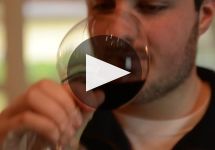Sandrone Barolo Le Vigne (1.5 Liter Magnum) 2013
-
Wine
Enthusiast -
Jeb
Dunnuck -
Robert
Parker -
James
Suckling -
Wine
Spectator -
Wine &
Spirits


Product Details
Your Rating
Somm Note
Winemaker Notes
Professional Ratings
-
Wine Enthusiast
Alluring scents of blue flower, rose petal, woodland berry, baking spice and new leather take center stage along with a balsamic note of menthol. The delicious enveloping palate doles out juicy morello cherry, crushed raspberry, cinnamon and licorice framed in refined tannins and bright acidity. It's polished and already tempting but hold for even more complexity.
-
Jeb Dunnuck
The 2013 Barolo Le Vigne is a sensational, incredibly gorgeous wine. Coming from multiple sites and aged 18 months in 500-liter French oak barrels, it offers a perfumed, intense bouquet of kirsch liqueur, blackberries, graphite, dried flowers, and hints of minerality. Deep, medium to full-bodied, incredibly fine and polished, it’s one of those Nebbioli that packs tremendous power and intensity yet just glides across the palate. It’s the essence of elegance and purity in Nebbiolo.
-
Robert Parker's Wine Advocate
The 2013 Barolo le Vigne is another stellar achievement from Luciano Sandrone and his family. Since 2010, the blend for this wine has been tweaked just a bit to include more fruit from the Baudana cru in Serralunga d'Alba. This wine shows a ripe and succulent mouthfeel with ample richness and power that drives the wine smoothly over the palate. These darker qualities can be attributed to the Baudana fruit that is known for power and heft. Fruit from the Villero cru in Castiglione Falletto offers delicate perfumes and ethereal elegance. This vineyard site is home to loose, sandy soils. The combination of these two extremes is simply delightful.
Rating: 96+ -
James Suckling
The aromas to this young Barolo are vivid and bright with blueberry and stone character. Full body, chewy and polished tannins and a flavorful finish. Powerful and balanced. One of my favorites.
-
Wine Spectator
A taut, racy style, this boasts cherry, strawberry, licorice and leather flavors, with hints of mineral, iron, spice and underbrush. Remains vibrant on the finish, which stretches out. The fruit comes back at the end. Best from 2022 through 2042.
-
Wine & Spirits
A blend of fruit from crus in Serralunga d’Alba, Castiglione Falletto, Barolo and Novello, the 2013 Le Vigne feels balanced and complete. The red fruit flavors are vibrant and fresh, shining through the wine’s luxurious texture. Notes of vanilla and sweet spice lend richness, even as the wine’s cool, mineral tannins keep the flavors taut and precise.
Other Vintages
2019-
Robert
Parker -
James
Suckling -
Wine
Enthusiast -
Wine
Spectator
-
Robert
Parker -
Wine
Spectator -
James
Suckling -
Wine
Enthusiast -
Wine &
Spirits
-
James
Suckling -
Wine
Enthusiast -
Wine &
Spirits -
Wine
Spectator
-
Robert
Parker -
Wine
Enthusiast -
Wine &
Spirits -
James
Suckling -
Wine
Spectator
-
James
Suckling -
Wine
Enthusiast -
Robert
Parker -
Wine
Spectator
-
James
Suckling -
Wine &
Spirits -
Wine
Spectator -
Robert
Parker
-
Wine
Spectator -
James
Suckling -
Robert
Parker -
Wine &
Spirits
-
Wine &
Spirits -
James
Suckling -
Wine
Enthusiast -
Robert
Parker -
Wine
Spectator
-
Robert
Parker -
James
Suckling -
Wine
Spectator
-
Wine
Enthusiast -
Robert
Parker -
James
Suckling -
Wine
Spectator
-
Robert
Parker -
James
Suckling -
Wine &
Spirits -
Wine
Spectator
-
Robert
Parker -
James
Suckling -
Wine
Enthusiast -
Wine
Spectator
-
Robert
Parker -
Wine
Spectator
-
Wine
Spectator
-
Robert
Parker -
Wine
Spectator
-
Robert
Parker -
Wine
Enthusiast -
Wine
Spectator
-
James
Suckling -
Wine
Spectator -
Robert
Parker
-
Robert
Parker
-
Robert
Parker -
Wine
Spectator
-
Wine
Spectator -
Robert
Parker
-
Robert
Parker

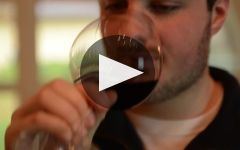
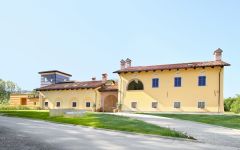

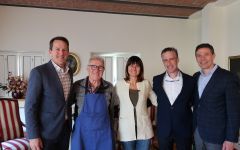
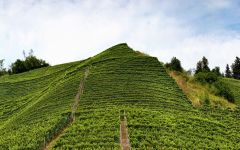
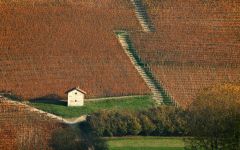
Luciano Sandrone is one of the most iconic producers in Barolo, and his is both a well known and extraordinary story. He started to learn viticulture at the age of 14 or 15, and after years of work as a cellarman he depleted his life savings and purchased his first vineyard on the Cannubi hill in 1977, though he could only manage his land on the weekends while he continued to work. He made his first vintage in 1978, in the garage of his parents, and then spent years refining his ideas about how to make a wine of distinction and utmost quality that respected the traditions of Barolo while incorporating new ideas and understanding about viticulture and vinification. He made every vintage until 1999 at home, until the winery he constructed in 1998 was ready for use.
Sandrone's wines are sometimes described as straddling the modern and traditional styles in the region: elegant, attractive and easy to appreciate right from their first years in bottle, but with no less power and structure than traditional Barolos. Along with the extremely low yields in the vineyard and an obsessive attention to training, pruning and harvesting, Sandrone has a very rational approach in the cellar. This approach, however, is also unique and outside of simple classification: Sandrone subjects his wines to medium-length maceration period, shorter than traditional, but makes limited use of new oak in the maturation process, which takes place in 500 liter tonneaux, all signs of a more traditional approach in the cellar. The entire range of wines, all limited in production, are jewels of impeccably balanced concentration and precision, and the ability to age for long periods of time.

Responsible for some of the most elegant and age-worthy wines in the world, Nebbiolo, named for the ubiquitous autumnal fog (called nebbia in Italian), is the star variety of northern Italy’s Piedmont region. Grown throughout the area, as well as in the neighboring Valle d’Aosta and Valtellina, it reaches its highest potential in the Piedmontese villages of Barolo, Barbaresco and Roero. Outside of Italy, growers are still very much in the experimentation stage but some success has been achieved in parts of California. Somm Secret—If you’re new to Nebbiolo, start with a charming, wallet-friendly, early-drinking Langhe Nebbiolo or Nebbiolo d'Alba.

The center of the production of the world’s most exclusive and age-worthy red wines made from Nebbiolo, the Barolo wine region includes five core townships: La Morra, Monforte d’Alba, Serralunga d’Alba, Castiglione Falletto and the Barolo village itself, as well as a few outlying villages. The landscape of Barolo, characterized by prominent and castle-topped hills, is full of history and romance centered on the Nebbiolo grape. Its wines, with the signature “tar and roses” aromas, have a deceptively light garnet color but full presence on the palate and plenty of tannins and acidity. In a well-made Barolo wine, one can expect to find complexity and good evolution with notes of, for example, strawberry, cherry, plum, leather, truffle, anise, fresh and dried herbs, tobacco and violets.
There are two predominant soil types here, which distinguish Barolo from the lesser surrounding areas. Compact and fertile Tortonian sandy marls define the vineyards farthest west and at higher elevations. Typically the Barolo wines coming from this side, from La Morra and Barolo, can be approachable relatively early on in their evolution and represent the “feminine” side of Barolo, often closer in style to Barbaresco with elegant perfume and fresh fruit.
On the eastern side of the Barolo wine region, Helvetian soils of compressed sandstone and chalks are less fertile, producing wines with intense body, power and structured tannins. This more “masculine” style comes from Monforte d’Alba and Serralunga d’Alba. The township of Castiglione Falletto covers a spine with both soil types.
The best Barolo wines need 10-15 years before they are ready to drink, and can further age for several decades.
